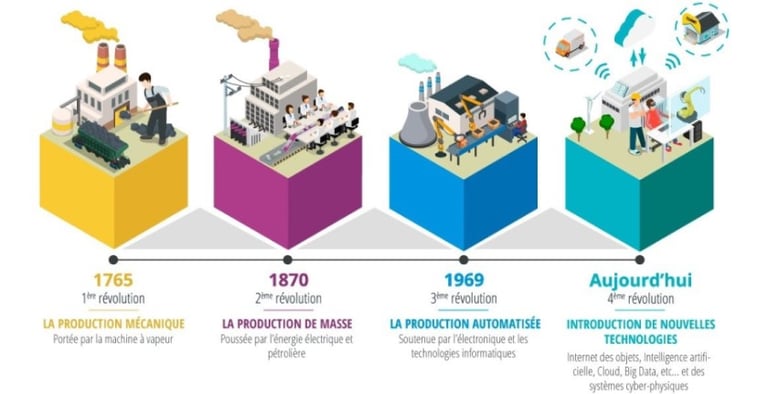A concept linked to the current industrial revolution and a theme that is on everyone's lips, we are going to share the best practices that we put in place when we carry out a project to integrate our "Industry 4.0" solution. But first, let's find out what this term means.
What's behind "Industry 4.0"?
It is simply the 4th industrial revolution that will allow the Internet of Things (IoT) to integrate factories and your production tools. It includes technologies such as cobotics (human-robot collaboration), artificial intelligence, 3D printing or even the augmented reality. The fields of application of these technologies are very vast but will not be the subject of today's article. One of the major challenges lies in the methods that will be used to enable the operational use of these technologies.
Now let's see what are the recommended best practices used by our Spectral Augmented Reality TMS software solution.
1) Identification and prioritization of your pain or problems
Certainly the most important step, the identification of your problems will allow you to create a relief on your ground and thus to prioritize them. All these problems can be solved by organizational methods, or by the application of innovative technology.
These problems will then be transformed into application cases through tests. It will be on these issues that you will build your roadmap 4.0, for example.
We can find the following themes: format change on a production line, making your teams responsible for maintenance actions or training that needs to be improved.
2. Identification of tools and testing of different solutions 4.0
You are now going to select the technological components that meet your industrial challenges in order to carry out a POC: proof of concept. In other words, you will try a technology in your environment to make sure it meets your need.
The objectives are multiple and all very important.
The POC will allow you to project yourself on the potential of a chosen technology to address a problem you have. You will be able to put your finger on different essential indicators that will allow the success of a future larger project:
- The relevance of the technology: is it really augmented reality that I need to deal with issues such as the transmission of know-how, for example?
- Human acceptance of technology: yes, we must innovate, but we must not forget man and therefore the end user.
- The positive impact on your operations: what about ROI? On these issues, can I validate gains with such a solution?
- Prepare the pilot project. We will detail this in the next section.
This is the time when you need to test several solutions before validating a driver.
3. Setting up an extended test phase in your factory 4.0
Now that you have identified a solution that meets your needs, you need to prepare an extended test phase, which may be called the pre-deployment or pilot phase.
Before launching a pilot, it is essential to have identified the following elements:
- The scope of the pilot: what is the main use case that will be monitored for three months? On which site will the solution be used?
- Performance indicators: essential if you want to know the long-term impact of the chosen technology.
- A proactive team that will know how to provoke the use of the solution, will want to make things change, to go out and make money and take future users on board with them.
- A high level sponsor: you want to put the chances on your side to accelerate a deployment if you are convinced by the solution you are testing. Bringing on board a high-level project sponsor (comex for example) will be a catalyst for a deployment.
Your objective during the pilot phase will therefore be to align all of these elements to organize an operational deployment of the solution.
In the end, you will continue to use the technology on the identified perimeter, but also, you will repeat this practice much more easily on other more or less similar perimeters.
Here is a summary of the method we use today when we conduct projects with the Spectral TMS solution. If you have any questions, we can be reached at the following e-mail address contact@spectraltms.com./vc_column_text][/vc_column][/vc_row]
Published:
By: Spectral TMS



